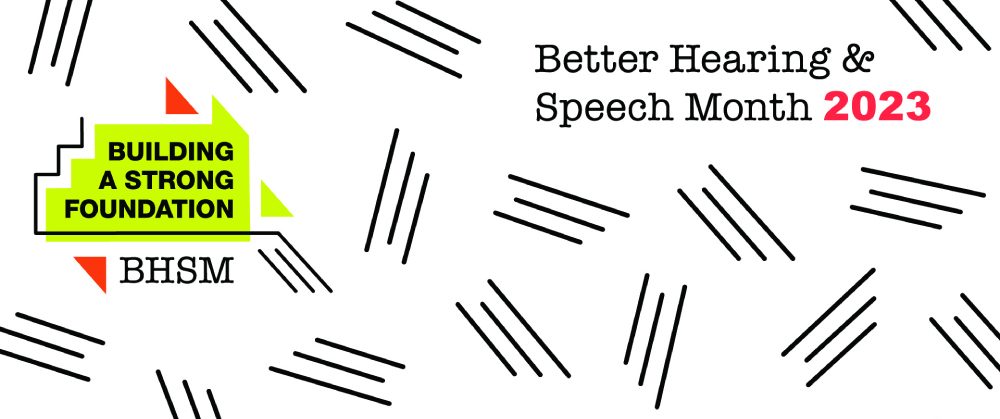We’re in the middle of Better Hearing and Speech Month (BHSM), and we hope your May is off to a great start. After an intermission to recognize National Stuttering Awareness Week, we’re back with more resources on early intervention in honor of the 10th anniversary of ASHA’s Identify The Signs campaign.
Early Intervention and COVID-19
The Impact of COVID-19 on Illinois Early Intervention Services: The onset of the COVID-19 pandemic in the United States resulted in a quick pivot to telepractice for many clinicians and those who benefitted from their services. This article explores the impact of those changes, including a decrease in sessions and fewer early intervention referrals, which may negatively impact these children later on.
Telepractice Evaluations With Children Who Are Deaf/Hard of Hearing: A Clinical Approach for Early Intervention Speech-Language Pathologists: The shift to telepractice in March 2020 saw ASHA members demonstrate tremendous versatility, with many working in telepractice for the first time with very little preparation. Authors describe how their clinic implemented speech-language pathology telepractice for children who were deaf and hard of hearing (DHH) and their families.
Early Intervention Resources for Audiologists and SLPs
Effects of Early Intervention Frequency on Expressive Vocabulary Growth Rates of Very Young Children Who Are Deaf or Hard of Hearing: How Much Is Enough? Children who are DHH show a smaller spoken vocabulary compared with their peers with typical hearing, even when they’re using hearing aids or cochlear implants. Intervention before the age of 3 can result in better vocabulary outcomes, and more intervention hours are associated with an even larger vocabulary.
From Higher Education to Hands-On: A Qualitative Examination of the Preparation of Early Intervention Speech-Language Pathologists: Academic programs can help better prepare future SLPs for their work in early intervention, including working with families and interprofessional practice. This article includes examples of how these programs can partner with local SLPs who work in early intervention.
The Role of Naturalistic Developmental Behavioral Interventions in Early Intervention for Autistic Toddlers: An Observational Study: Naturalistic developmental behavioral interventions can help facilitate social communication development for autistic toddlers, but the highly structured protocols of such interventions may be a barrier for SLPs. The authors observed SLPs using these strategies and presented suggestions for future research and future training for clinicians.
More Resources From ASHA
You can discover more articles on early identification and intervention on the ASHAWire Topic page, containing hundreds of articles from all five ASHA Journals and The ASHA Leader. Be sure to check back with ASHAWire regularly for more updates on early identification and intervention.
There are still a few weeks left in May, so be sure to share any of the dozens of resources on ASHA’s BHSM page before the month is over. In honor of the 10th anniversary of ASHA’s Identify the Signs campaign, we suggest that you check out the myriad resources available. You already know the importance of early identification of communication disorders, so make sure you share the knowledge!







